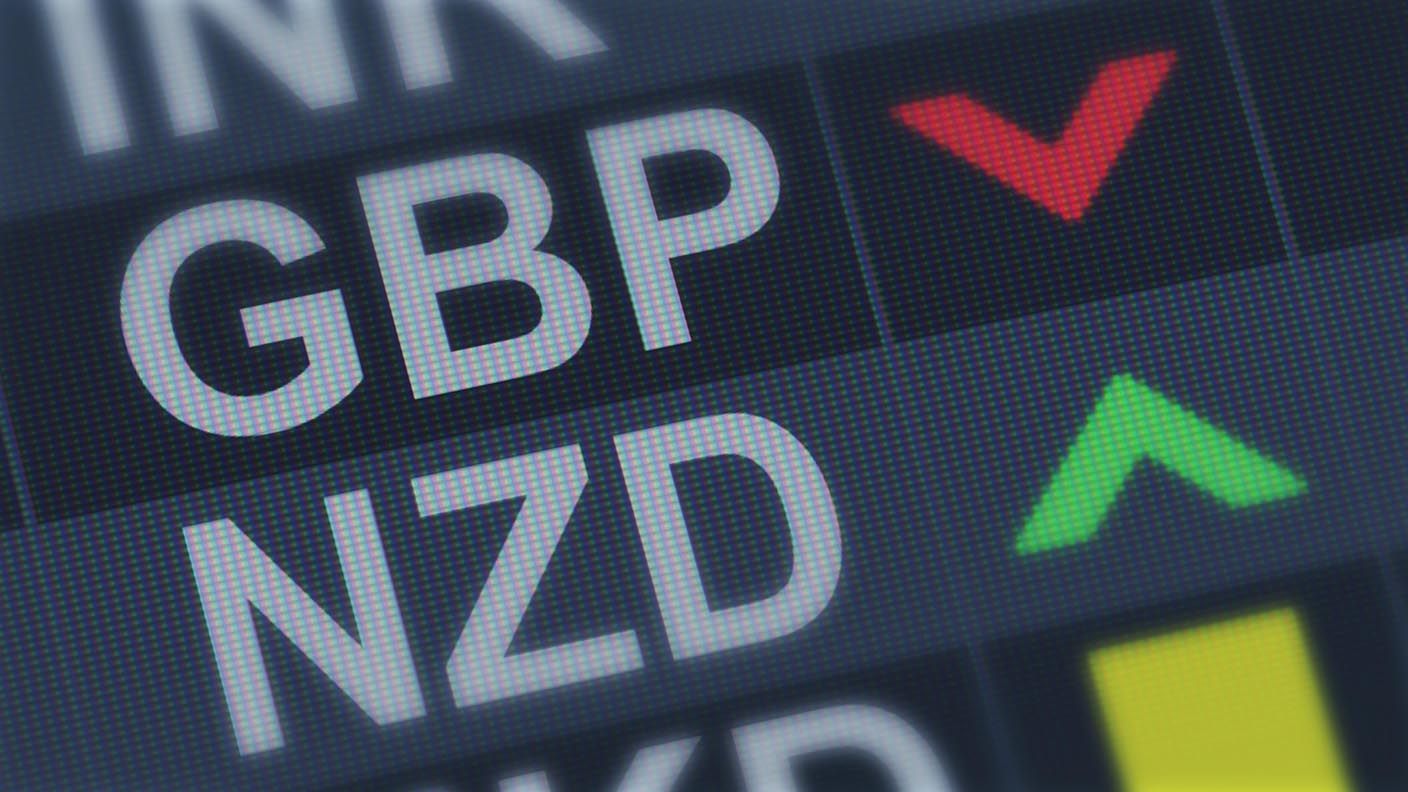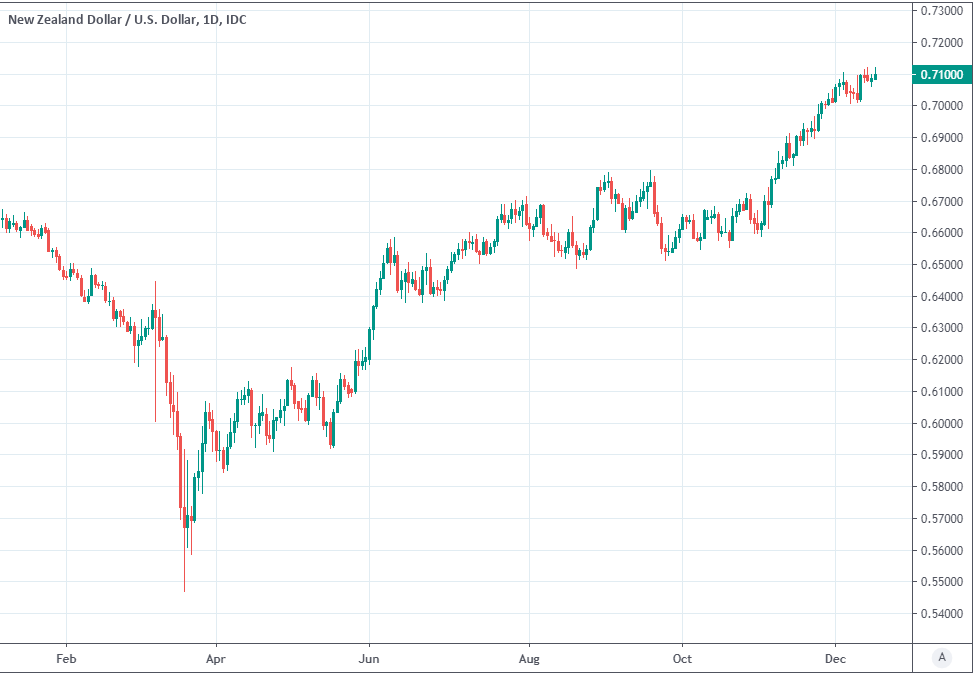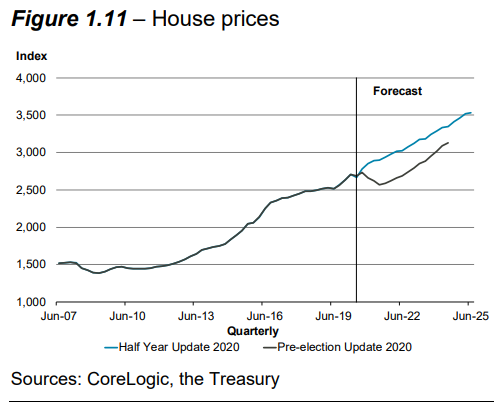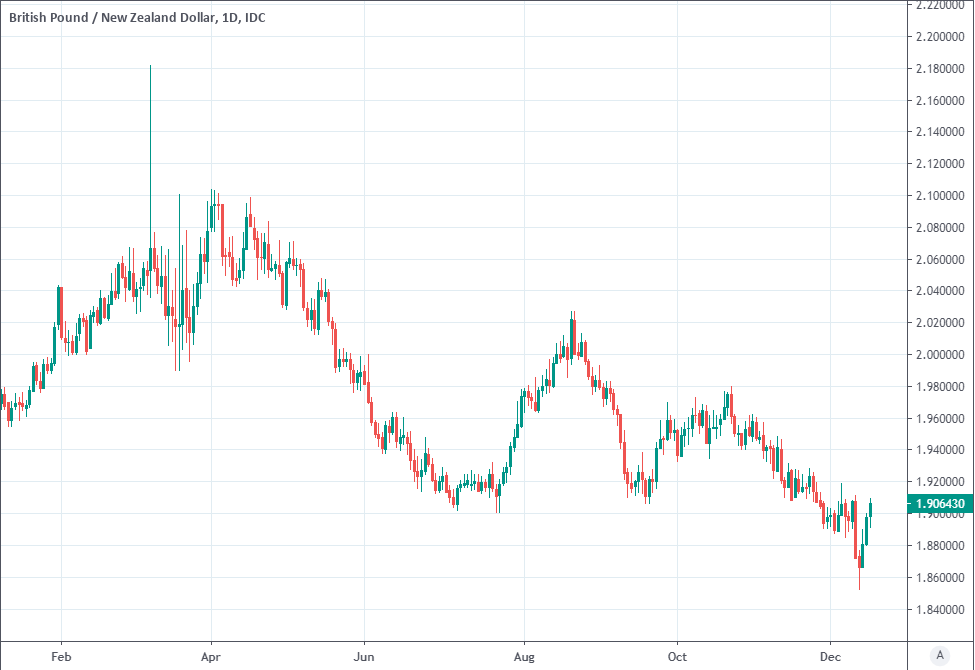New Zealand Dollar's Economic Dividend Curbs GBP/NZD Even as Brexit Deal Looms
- Written by: James Skinner
- NZD benefits from "conservative" upgrade to economic forecasts.
- 2020 contraction revised down, 2021 rebound up as deficit narrows.
- Tax revenue revised up, borrowing down, resulting in better balance.
- NZ economy seen outperforming UK, EU and Japan in recovery.
- Burnishes NZD's investment credentials, constrains GBP/NZD.

© Adobe Stock
- GBP/NZD spot rate at time of publication: 1.9056
- Bank transfer rate (indicative guide): 1.8262-1.8394
- FX specialist providers (indicative guide): 1.8640-1.8792
- More information on FX specialist rates here
The New Zealand Dollar was back near the top of the major currency class on Wednesday after the treasury detailed the dividend that Kiwi economy is expected to receive from its quicker containment of the coronavirus, which has helped to curb this week's Brexit-inspired rally in GBP/NZD.
New Zealand's Dollar lagged only the Pound and Nordic currencies on Wednesday following the half-year financial and economic update from Treasury, and ahead of third-quarter GDP data due out in the overnight hours ahead of Thursday.
The Pound-to-New Zealand Dollar rate was one of Sterling's lesser gainers due mainly to the performance of the Kiwi currency.
Finance Minister Grant Robertson's update confirmed an economic outlook that is brighter than the government previously perceived, and a public purse that is not only in better health than many had anticipated, but which is expected to remain that way in the years ahead.
"The news lifted bonds and supported NZD," says Tim Riddell, a London-based macro strategist at Westpac. "Westpac suggests the forecasts are conservative and could be upgraded again."
New Zealand's economy is likely to outperform many of its comparable counterparts over the coming years including the UK, Eurozone and Japan, Robertson said, after the Kiwis were among the first in line to successfully contain the coronavirus. The country frequently sees days in which no new coronavirus infections are detected and has reported only single digit daily numbers since October 21, compared with the tens of thousands found each day in European and North American countries.
Above: NZD/USD rate shown at daily intervals. .
The anticipated 2020 contraction was revised down from -3.1%, to -2.1% following a less-than-expected -12.2% decline in the second quarter.
Treasury had been too downbeat on the outlook having forecast a -16% fall in GDP, which may be salient given the looming third-quarter data. For comparison, the UK economy contracted by a fifth in the second quarter and the market anticipates an annualised -11.1% decline for 2020.
New Zealand's third-quarter GDP, which is set for release at 00:30 London time on Thursday, was tipped by Treasury to come in at +10.5%. This is less than the 12.9% anticipated by consensus and a long way below some forecasts from local banks. Treasury anticipates a further 2.2% rise to end the year.
"A better medium-term outlook, higher tax-take and lower costs have reduced pressure on the Government’s finances. Although deficits are expected and debt is expected to increase, this is by less than previously assumed. The bond programme has consequently been downgraded, in line with our expectations," says Liz Kendall, an economist at ANZ. "All up, the starting point and outlook is a little better, but the broader story is much the same: the economy is not out of the woods, economic scarring is unavoidable, but the initial fiscal and monetary policy response has been very effective at limiting the damage brought about by lockdowns. Unfortunately, that’s not been without a cost."
Above: New Zealand Treasury forecast for change in average house price.
Unemployment is now forecast to peak at 6.9% by the end of 2021, compared to 7.8% forecast in the earlier round of forecasts, which is a positive for Kiwis. However, most notable for investors are projections relating to tax revenues, the deficit and debt levels. All of these were revised favourably while new treasury forecasts for house prices served to underline the continued attractiveness of the Kiwi economy and Dollar to investors.
New Zealand's debt and debt-to-GDP ratio are still expected to double over the coming years however, after having entered the crisis with one of the developed world's lowest levels of government debt, it is also still expected to emerge from the pandemic with a best-in-class balance sheet even if it has still deteriorated. In the relative world of financial markets, this sets the New Zealand Dollar and Kiwi assets apart from much of the rest of the developed world crowd.
"The strong bounce-back in growth means a much better set of government fiscal accounts, reducing the need for debt issuance and reducing the necessary bond-buying of the RBNZ to keep yields in check. While both releases won’t necessarily surprise, they are supportive for the NZD," says Jason Wong, a strategist at BNZ. "The NZD has been tightly bound trading roughly between 0.7060 and 0.7090, currently at the top end of that range and still reluctant to push sustainably above the 0.71 mark for now."
Above: Pound-to-New Zealand Dollar rate shown at daily intervals. .
New Zealand's Dollar has been one of the better performing major currencies in recent weeks, aided not only by an economy that's pulling ahead in the race to recovery but also the Reserve Bank of New Zealand (RBNZ), which dialled down in November its earlier threats to adopt negative interest rates in 2021. The outlook for New Zealand's interest rate is now seen as finely balanced rather than a case of an almost certain plunge far below zero in the near future.
Those earlier factors combined with Thursday's more upbeat forecasts has curbed a still-ongoing recovery in the Pound-to-New Zealand Dollar rate, which has risen from a proverbial grave this week in response to speculation suggesting that a Brexit trade agreement could be struck as soon as Wednesday and potentially announced on Thursday. There is however, a risk that the announcement is delayed until next week for domestic political reasons, which could cause more short-term volatility in Sterling.
"We have long expected a deal, and ignored the political posturing, and a positive outcome would see further strength in GBP and NZD/GBP threatening 0.50," says BNZ's Wong, who forecasts a GBP/NZD rate of 2.0 following any agreement to close the four year, if-not four decade long Brexit saga.
New Zealand's half-year economic and fiscal update can be found in full here.







